Mike Beer makes things. He makes really cool things that evoke a nostalgic or experiential sense of connection. His intricate miniature builds of pop culture objects and more recently urban spaces, are undeniably inviting in their detail. I first became aware of Mike when he presented the team at Fiksate a collection of miniature objects – a tiny crate filled with nostalgic vinyl records and an ornately framed recreation of a painting by Nick Lowry. They were irresistibly cool. But it was when I saw his recreated urban environments on his Instagram feed that I was completely blown away. The spaces that I have always cherished, the liminal and peripheral spaces that are infinitely attractive to urban artists and explorers, were presented in miniature form, yet their small scale was still packed with fine details that made you double take to ensure you weren’t actually scanning the real world. As his productions continued to impress, my interest grew and I knew I needed to find out more. I was lucky enough to sit down with Mike and talk about his work one Friday morning (we followed our chat with a spot of bando hunting). If his work was immediately endearing, the artist himself proved equally so; a bundle of friendly, enthusiastic energy. His thick Brummie accent (Originally from Birmingham, Mike has lived in Christchurch for 15 years) adding an additional charm. As we talked it was obvious his scratch builds had a longer lineage, one that explored personal connection to place. If I was immediately charmed by the memories evoked in his builds, it was apparent he also understood this potential, imbuing his work with much more than simple, skilful imitation…
I imagine as a child you were into making things…
I have always loved horror movies. When I was about seven, I had this fascination with the Alien egg, you know the way it used to open? I just thought, I’ve got to make that! So, I made this thing out of chicken wire and paper-mâché. Looking back, it was hideous, but I was only a kid, and I loved it! From then on it was toy models, all movie related stuff, really. I guess since then I’ve always been interested in making stuff and using different mediums. But it was only later in my life that have I done it as a career. When a position come up at the Court Theater as a prop technician, I was just like, I’m getting that job! I knew a lot of people would be gunning for the job, so I was thinking about how I could stand out. In the end I made this giant tombstone, with a skull with a jaw that opened. I engraved the Court Theater on the tombstone… It sounds a bit excessive, doesn’t it?! [Laughs] It cost me like $400 to make! Then I wax stamped my CV and put it in the mouth of the skull. I remember going up to the reception to drop it off, and they were like, just drop it here. I said, actually, it’s just outside… So, we walked outside and here was this massive fucking thing. They must have been thinking, this guy’s weird! [Laughs] But it got me that foot in the door for the first interview. It was the strangest interview as well. They gave you a bunch of bits and bobs to make something within half an hour and then explain what you had created. I thought it had gone really badly, but I went for a second interview and got the job…
For that type of job, actually making something seems much more important than talking about it, right?
Definitely. But I mean, for me, when you’re on the spot, it’s really difficult. It was random stuff too; there was a lid from a milkshake container, there were a couple of plastic dice, a straw, a balloon… You know when you’re panicking and you’re like, oh no! So, I’m just sticking this Plasticine onto a balloon and I made this thing, it was just like a lump of shit, and they were like, ‘So, what have you made?’ And I remember coming up with: ‘A time machine?’ [Laughs] There wasn’t much that you could do with that stuff, but in the end, I guess using my imagination actually got me the job…
Do you have any formal training in any visual arts or practical arts courses?
No. I’ve always made stuff, but I’ve never gone to college. It’s always been a passion and I have always been self-taught. It’s interesting because some of the most brilliant artists I’ve met don’t necessarily have qualifications. Don’t get me wrong, there are amazing artists that do, but there are also amazing artists that don’t have educational qualifications, you know, and that’s kind of my path too…
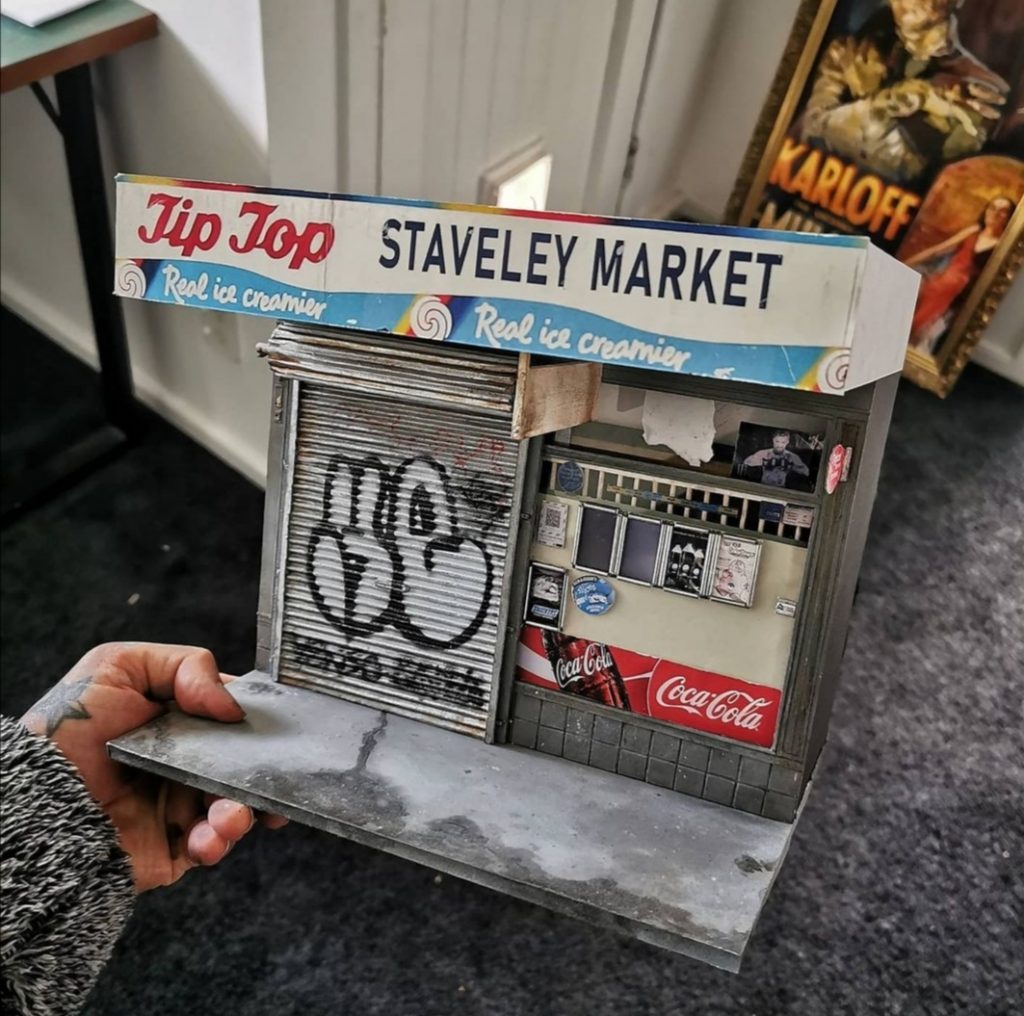
I imagine with scratch builds, it is constantly about problem solving and thinking outside the box, so a willingness to learn new techniques and break from convention must be important…
Yeah, it’s a big thing. That creativity to think freely rather than being constricted is important to me. I’ve never really enjoyed working, I mean who does? But especially when I feel constricted and not engaged. To be creative is so important to my state of mind, it is what keeps me going, you know? Like you said, when you have enough freedom to just mess around with stuff and make lots of mistakes, that’s how you get better. If you are constantly doing stuff, you are constantly getting better at what you are doing and you are going to push past those boundaries. Without sounding cheesy, I also think it’s important to grow as an artist, to take criticism and to listen to others. Growing up I’ve always had friends that have been artistic, and you learn from other people. I think you hit a stalemate if you think your work is at its peak. It never is. Unless you can take criticism on board, you’ll never grow, you’ll never improve…
I imagine the online world is helpful for inspiration and learning new ideas, but it is different from a real network of other creatives to bounce ideas off…
Since I’ve lived in Christchurch, I’ve met a really close-knit group of people, and I’ve learned a hell of lot from them, so I suppose without them I wouldn’t be doing what I am doing. My god that sounded really cheesy! But yeah, you’re right, you need people like that along the way…
The first examples of your work I saw were the miniature objects at Fiksate, little record crates and tiny framed paintings, when did you start that approach?
That was about three years ago, after leaving the Court Theater. I was like, you know what, life’s short, I want to do what I love, and I love the movies and I love making stuff, so I’ll start making miniature stuff. Weirdly, because you know what it’s like with an artistic brain, I started making teddy bears with horror faces, I don’t know what I was thinking! [Laughs] But I did that for a couple of months and then I started doing key chains and they turned into retro VHS key chains and people wanted them and it grew from there to become Monster Mailman, an online store, basically. [Mike recently passed Monster Mailman onto new ownership] It took me on a journey, but it didn’t extend me enough, it didn’t challenge me as much as I wanted. But it was a gateway into what I’m doing now, I was just fascinated with the city and the art in it, all the rusty grimy buildings. It’s all connected, and I think I’m at a point where now I know this is what I was meant to do…
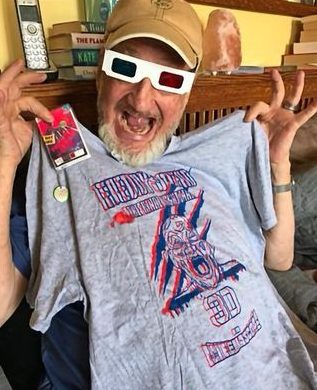
Were you doing any set work at the Court Theatre?
There was a little bit of set, but it was mainly props. It was a kid’s dream job, on the first day they needed me to paint 20 Nerf guns for Hamlet. Then I had to make a beating heart, it was ace man. I worked on some wicked shows, but you are still restricted to doing stuff for other people, if that makes sense, which is great but…
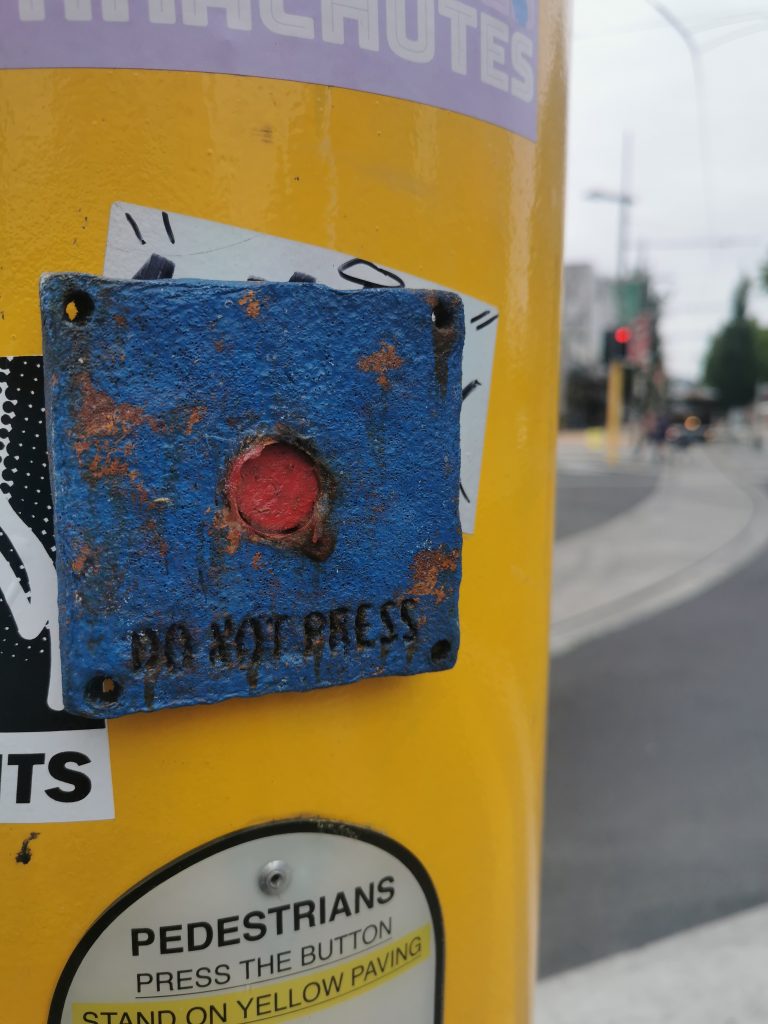
You are still making it to fit someone else’s narrative, whereas when you’re doing it purely for yourself, you are creating the story yourself as you make something. I ask about set making because to me the latest builds suggest occupation and activation, especially as real spaces where moments have played out like performances. Every space we encounter has meaning to us, even if it is only momentary. Is that something you think about with these builds?
Deep question! Yeah of course, obviously it’s all about connections, isn’t it? Going back to Monster Mailman, even that was about people’s connections with movies and the memories they create. We connect with things throughout our lives, so I suppose through the core of everything, that is what I hold onto the most – those connections, that nostalgia and the things that bring people to life, you know? Like, do you remember this? Or when we were doing this? Those memories and connections are what keep us going and that’s what life’s about. You find that in the city, you know, these buildings tell a story because of what they’ve been through, the art that’s on them and that’s what connects with people. It’s a million people’s lives through one lamppost, and that is magical man, it’s insane…
It’s been heightened here in Christchurch because many of the spaces that were colored by our memories and attachments have disappeared, so recreating those spaces in your scratch builds, there’s something really powerful in that.
There really is, even the smallest thing, like remembering that movie you watched as a child when you see it on TV, and that’s what I’m trying to incorporate by making stuff around the city.
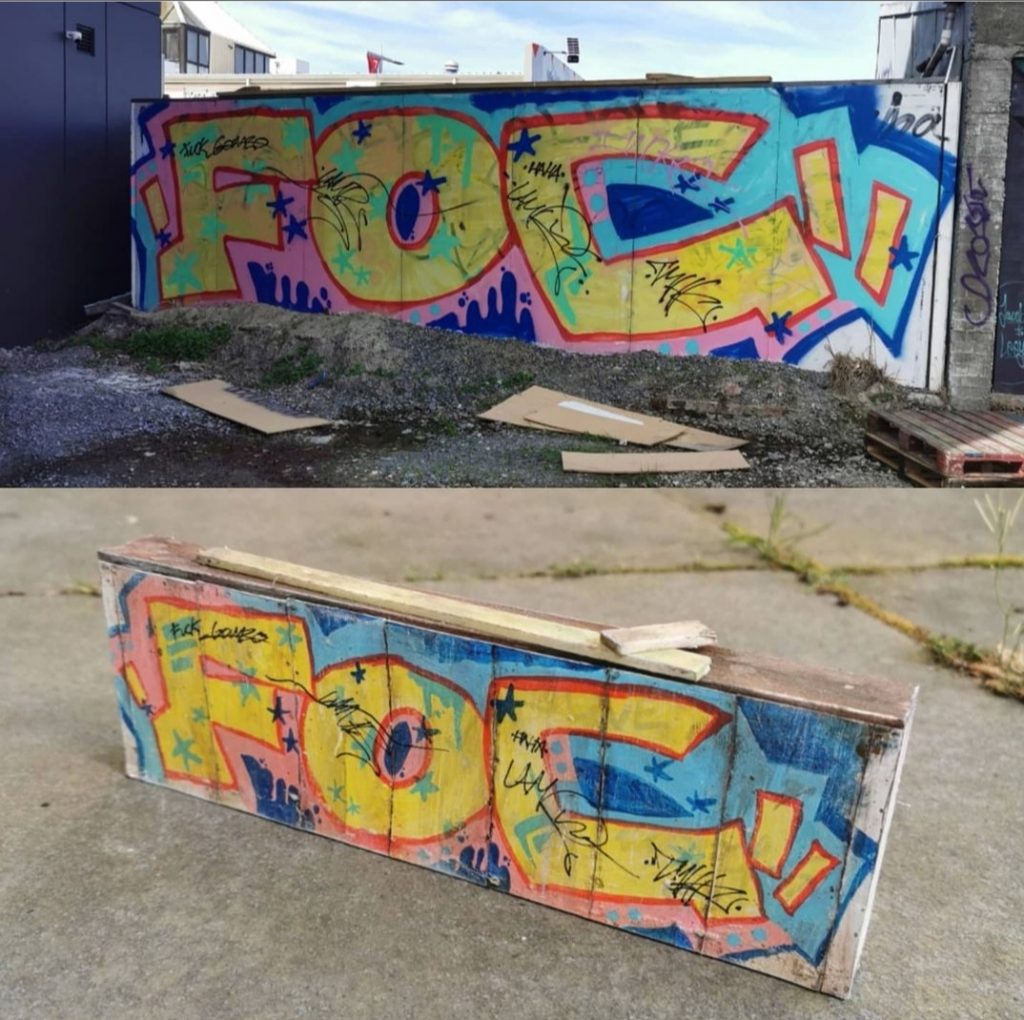
So, what was your first build, something that you had encountered in real life, or was it based on a photograph?
It was based on a photograph. There’s an artist, Joshua Smith, I love the guy! There’s lots of other artists who have inspired me, but with Joshua’s work, there was just something that made me think this stuff is incredible! I felt a connection with his stuff, even though I had not been to the cities that he recreated buildings from, I got it, you know? I instantly got it and I was like yeah man, that is going to be me in a couple of years, that’s what I want to replicate. I actually managed to get in contact with him, which was amazing. I love the city. I’m a city person. I’ve tried to live in the country, for me it sucked, but that’s just my experience! But the city is everything to me and it’s like what you see when you wander around a city, as opposed to driving or going straight to a location, it opens up a whole new world, and that is what I want to replicate and get people to feel that.

I’m a terrible driver around cities, my girlfriend is constantly telling me off because I’m always scanning around looking out for new graffiti or art…
You’re on the wrong side of the road again! [Laughs]
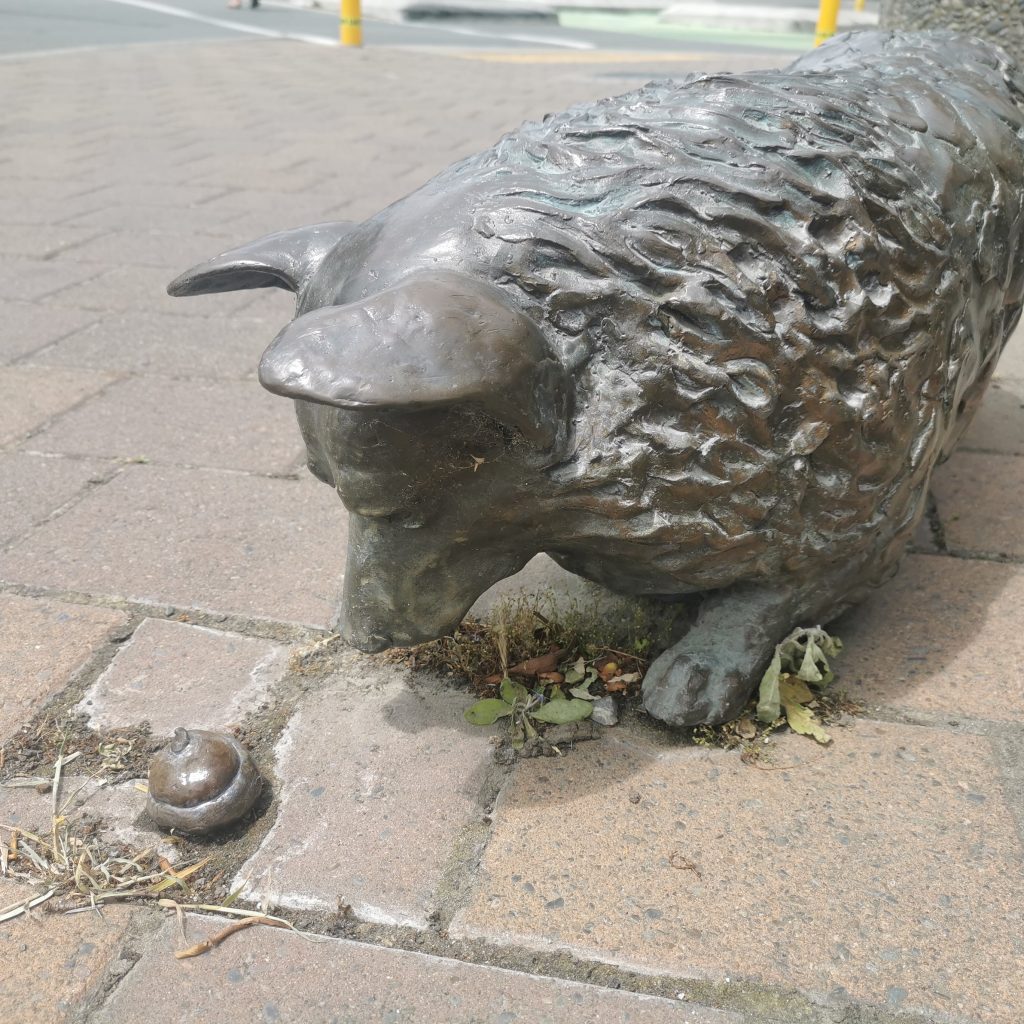
Exactly! But when you’re walking, you have that freedom. You can take a turn at any time. There’s something about being surprised and I think that again ties into the idea of being connected to space, because even if you’re replicating an environment that is seemingly inconsequential historically or civically, as long as that space has one little memorable tag, if you’re that way inclined, it is meaningful, because there’s a spark of recognition of its uniqueness…
Yeah, it’s huge and those tiniest of things, whether it’s an upturned tile, a paste up of a little gnome or something else, it is so unique. Once I was in town waiting for someone, at those dandy lion fountains [The Town Hall], and I saw the corner of this concrete building and someone in crayon had written ‘Déjà vu’ and I just had to get a picture of that, because I realised that it only existed right there…
You automatically think who? Why? How? It is a sign that someone else has been in that moment. It’s like the end of Stand By Me where one of the characters fades out as they walk away. It reminds us that there are all these layers of time in any place, that cities are made up of so many voices over time.
Don’t! You’re getting me man! [Laughs] The feels! [Laughs] But yeah, it’s multilayered, with voices that once existed but don’t anymore. That’s beautiful.
And again, here in Christchurch we’ve been exposed to all those layers because things have been broken and fallen down and those spaces have almost invited people to leave their mark, so what normally takes generations, has occurred over this much smaller period of time…
Yeah, that’s right.
Out of everything you have built, do any stand out for capturing that sense of loss or change in the city?
In regard to making something that doesn’t exist any longer? I’ve not actually made anything yet that’s disappeared completely, well apart from the wall with the Band-Aid paste up on Manchester Street. I did a build for my lovely mate Evan from Dead Video. Me and him share those connections from classic movies and old VHS, they inspired him to open Dead Video and me to start Monster Mailman. My dream has always been to work in a video store, and he let me work in Dead Video a few weeks ago for a couple of hours! Here’s me sat there, gesturing to people like, come in! [Laughs] I was in my element! He’s done this amazing thing where he’s brought this shop back and so I scratch built where he started Dead Video in a garage in Lyttelton. He finally moved to London Street recently, where he’s always wanted to be, the shop looks amazing. So, I built his original garage front store with the roller shutters and the tin iron roof. I even did the lights on the front. I’ve got to wire them up actually. He’s ripped out that store, but that was the start for Evan, it was magical and gave people so much joy because of what his store recreates. And now something that I’ve made and that he’ll have forever will hopefully remind him of that start and how far he has come, unless it’s on Trade Me, you never know with Ev!
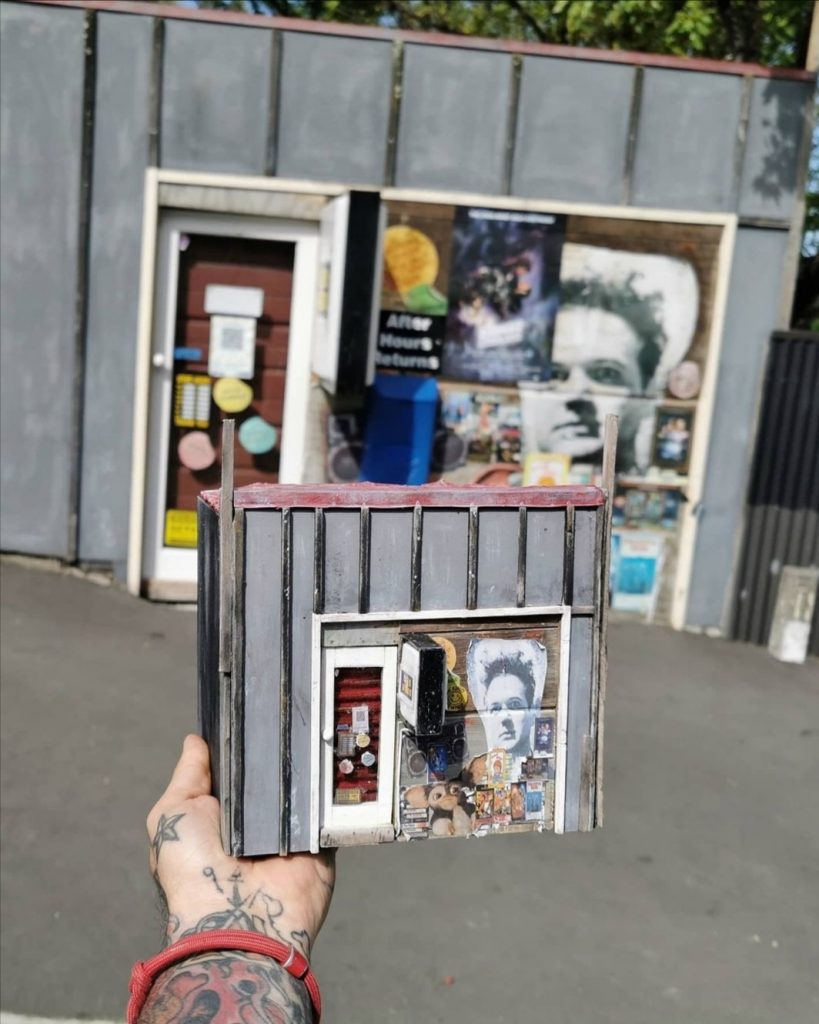
I remember the front of the old store was decked out with movie reference paste ups as well, which brings up the way urban art features in a lot of your miniatures, from the Band Aid paste ups to the doorway covered in work by the Slap City crew, did you have a connection to the graffiti and street art worlds prior?
I’ve always appreciated it. But it’s one of those things that I’ve always looked at from afar. It’s strange, I know there’s a divide with tagging in any city, but for me, it tells a story, you know, even if it’s in a place it shouldn’t be, I just I like that… It’s that connection. When I’m building stuff, I’m not interested in anything that’s modern because it has no character. It has no soul. For me, it’s all about buildings that have been through something, that have taken a battering and outlived us. And often they have got other people’s art on them, they become a representation of all the artists that have tagged them. They have stories to tell. I couldn’t do anything that was modern because it seems pointless to me…
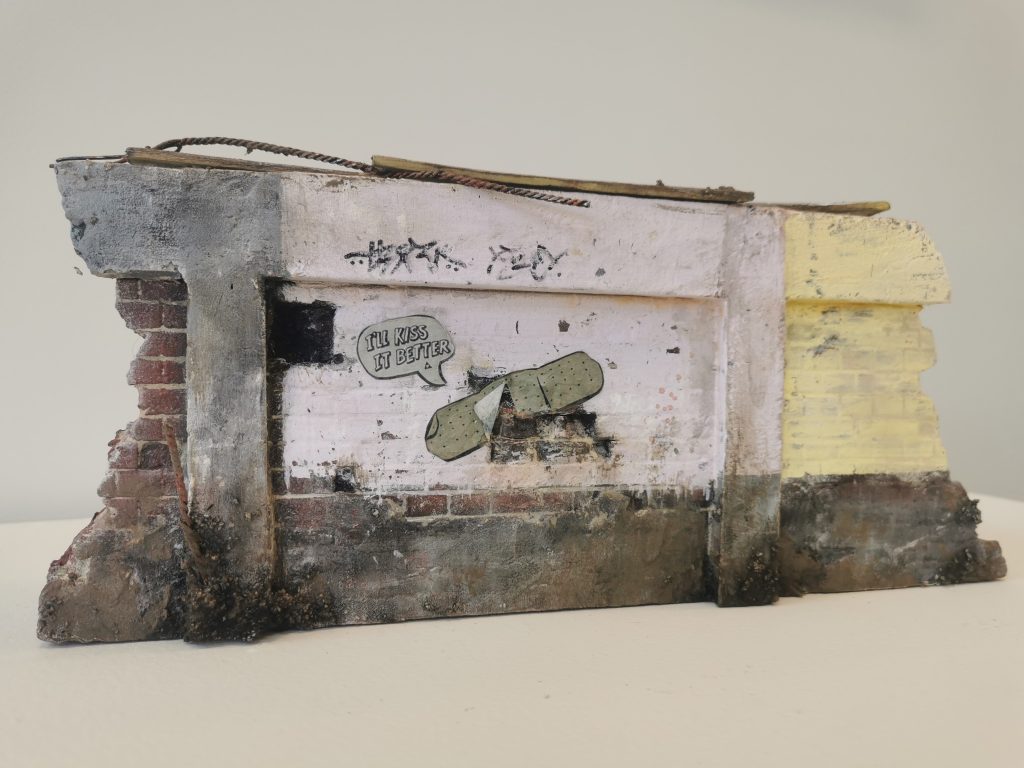
Again, it is about that layering, by choosing sites that feature graffiti and street art, there is the suggestion of the ability to reimagine the city, which is what you’re doing in a way. One of the things with how heavily buildings and public spaces are designed now is how they deny organic subversion. Urban art has always been about challenging that; skateboarding around the city is a way to change the designed use and the same with guerrilla artists making use of spaces and subverting them by seeing them in a different way.
It’s like putting a glitter ball in a forest isn’t it? Those modern buildings, for me, they’re just ugly. I understand they serve a purpose and we’ve got to rebuild, but you’re right, they are a little bit soulless. It sounds a bit harsh because obviously the people who built them probably don’t want that to be the case, and it is rebuilding the city, but they just don’t have that character, that feel…
Going behind the curtain a little bit, what’s the actual process of a scratch build? When I look at some of your pieces, I’m instantly drawn right in, getting as close as I can, looking at the amazing detail. The brickwork, the concrete, the rust, they invite that inquisition. But how do you do it? Or do you like to keep a veil of mystery?
The rust! I’m going to get weird now! [Laughs] I do think it’s really important to share certain skills with anyone who wants to know. It’s all about passing it on. I’m never too veiled with information. I know some people keep it to themselves because they don’t want anyone else making what they make, but I think it’s important to share as much information with other artists as possible. Art is to be shared, it’s not just a ‘me, me, me’ thing…
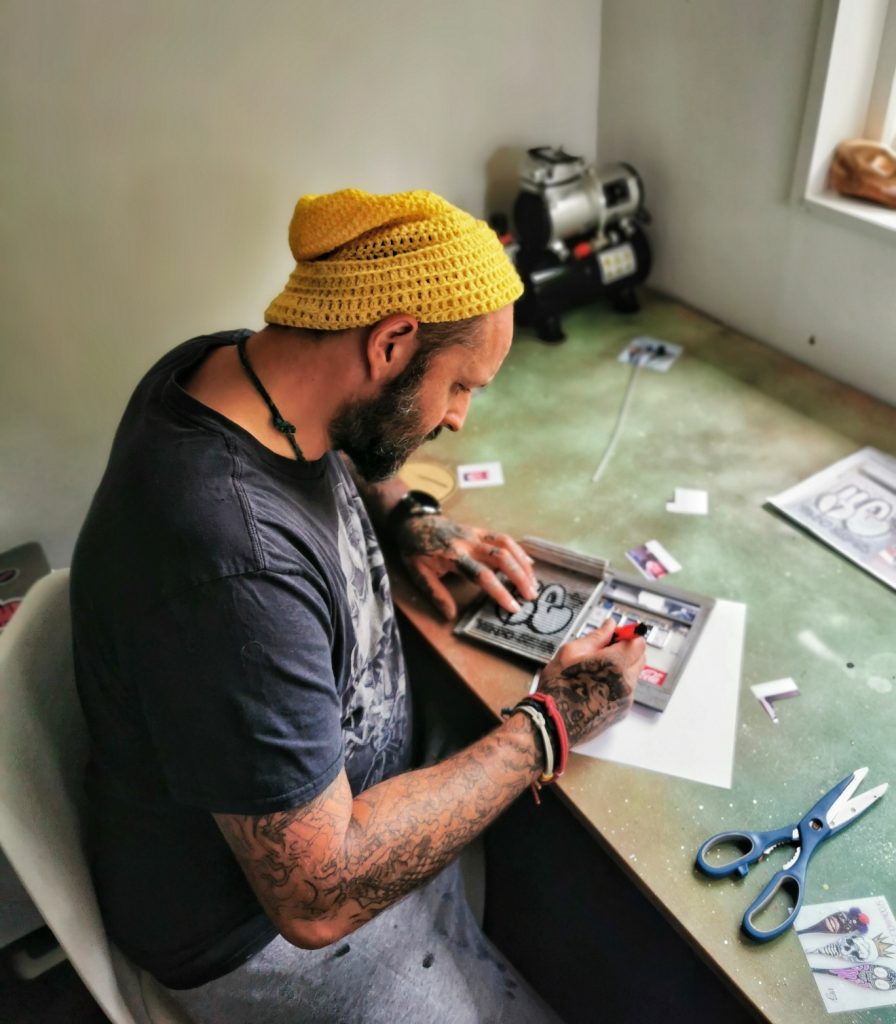
That becomes a two-way street as well, right? The more you share, the more people share with you…
Exactly, and beautiful things get made if you do that. It opens a whole new realm of people making lots of cool stuff. With my process, I found the devil is in the detail. If you make a brick wall it’s easy to paint it brick color and then just paint the grout grey and leave it, but it doesn’t have that authentic feel. I’ve literally got to grout the bricks. I even go into the garden and dig up soil and mix it with water, then when I finish the piece, I paint it with the soil in places to give a dirty look. You’ve just got to layer it and you’ve got to make it look as authentic as possible. It’s almost like you’re recreating it as it would have been made. With the door with the Slap City paste ups, I’d not seen it in town, but I’d seen Teeth Like Screwdrivers’ post on Instagram, and I was like, I’ve got to make that. So, I started the process. The brick work was difficult because it was stone, but I managed to figure it out. It’s all just angles and cutting in, and there’s little things that you learn along the way. I didn’t know how to recreate the plywood because it has been in the open and it’s stained. It’s got that heavy grain, which you don’t get when you buy small pieces of wood for a scratch build, so for ages I was racking my brain. Eventually, I just got a soldering iron and I thought I’ll see if this works. I burned the wood and it worked! I got that grain, but it’s such a process, I’ve obviously got a lot of free time! [Laughs] I drew the grain on, then I just washed it in different washes, and it came through. Sometimes that process takes ages, but it has to look real. I’m still learning as well. Even the rust technique on the skip, I literally found a new technique on how to get that beautiful rust color underneath. Before I was just dry brushing it and it didn’t look as authentic. So, I’m still learning along the way…
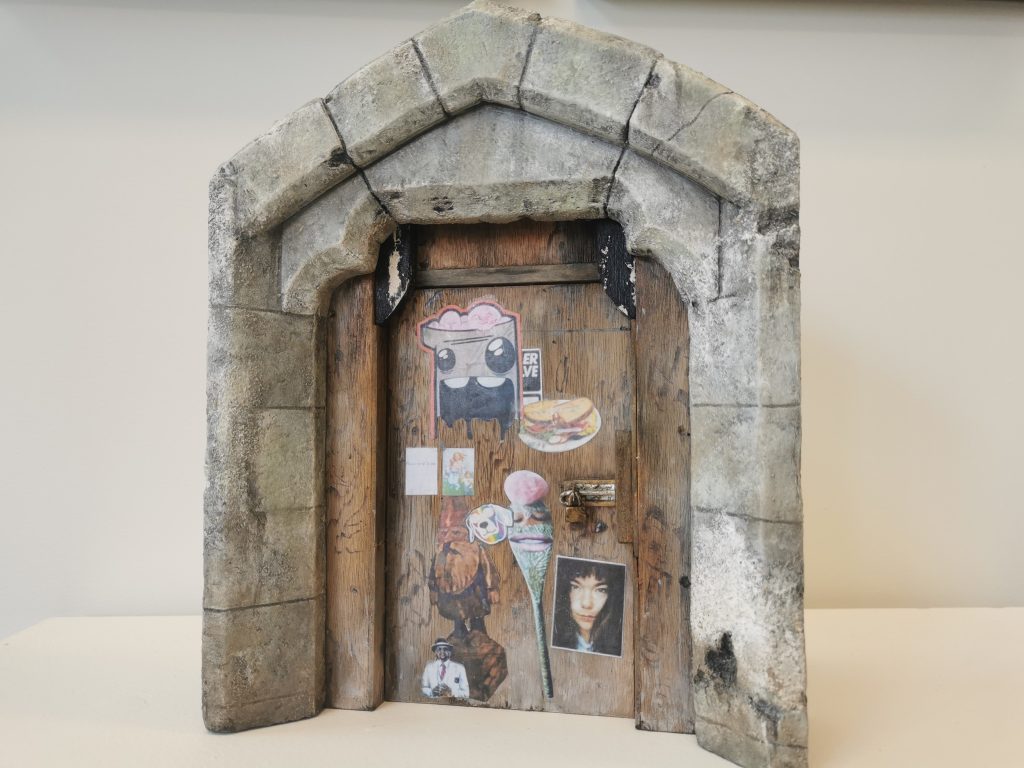
I guess like the psychological layers of a city, there are also physical layers, and they have to be evident for the piece to feel authentic and to actually make that connection. It’s like the uncanny valley with CGI effects, where our emotional connection is stronger to something the more it resembles reality, but when it isn’t quite right, our affinity decreases…
Definitely and that’s what’s great about art, to be able to step back from a piece, whatever piece it may be and question it, that’s great, that’s what I love about art. As to whether it’s negative or positive, I think any kind of reaction is quite visceral and that’s what’s wonderful about art, any kind of art, 2D, 3D, anything. Hopefully the reaction I get from my stuff is that recognition…
You are making real and tangible objects, so what is the next stage for these pieces? Is there a long-term goal?
The long-term goal is to build the entire Christchurch city! [Laughs] All the old buildings and stuff. The goal is to go extravagant, but obviously I don’t want to do anything that doesn’t connect with me. It’s got to connect with me as the artist. I’ve got to love what I make because that shows in what you do. I want to create something that people can just completely connect with on a different level. Since living in Christchurch, I’ve found the people are amazing you know, we’ve been through a lot of shit and are very resilient. I love this city and, it sounds cheesy man, but it’s just a way of giving back with your art in a sense.
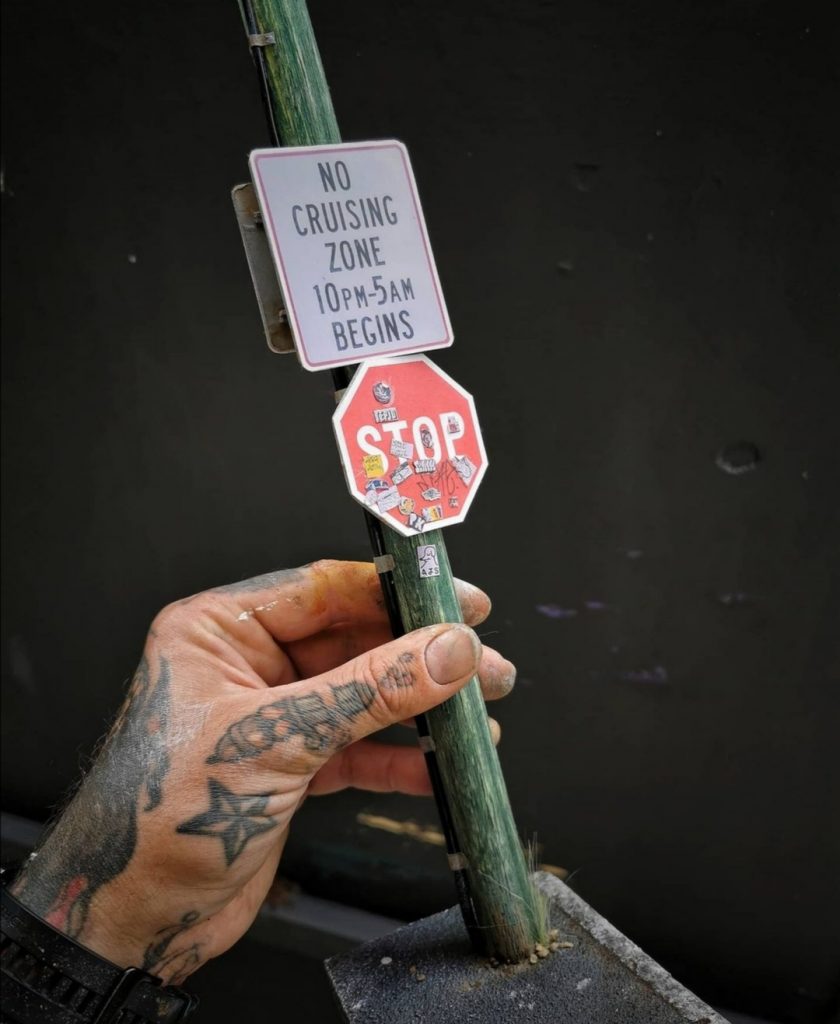
What pieces are in the pipeline at the moment?
There’s the juicy Design and Arts College building on Worcester Street! I have to make that! It’s so detailed when you look closely. I took a picture of it a couple of weeks ago. It’s all bolted up with chains and there’s rust and it’s got all this graffiti and there are paste ups, but then as you go higher you’ve got all these amazing windows. It’s gorgeous. I didn’t realize until I zoomed in on the photo, which I do when I’m trying to get the details, a lot of the windows are smashed and tagged from the inside, but then you look even closer and above the sash windows they have this copper awning, it’s really ornate. But I have to build it so that it looks exactly right, with the wire fences outside, the weeds… everything!
When it comes to choosing buildings to make, do you get inspiration from other people, from their recollections? You obviously avoid the obvious choices, like the Cathedral…
I’m not going to start building the gondola! But yes, I like hearing about people’s memories of buildings and especially the ones that are less known. Known but not known, I guess? I have spoken to a lot of people, like my mate Pete at Gordon Harris, I sat down with him a wee while ago and he was going over older buildings like Wizards, the Java Lounge and Toffs. I can connect with what I can connect with now, but I obviously can’t connect with buildings that don’t exist anymore, so I need to speak to people with regard to that. It’s just that with some buildings, what they’ve been through with the earthquakes, their age, the graffiti, the art, it all comes together.
Follow Mike on Instagram to see more of his amazing builds!

